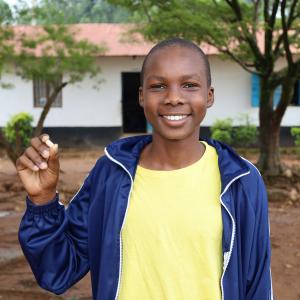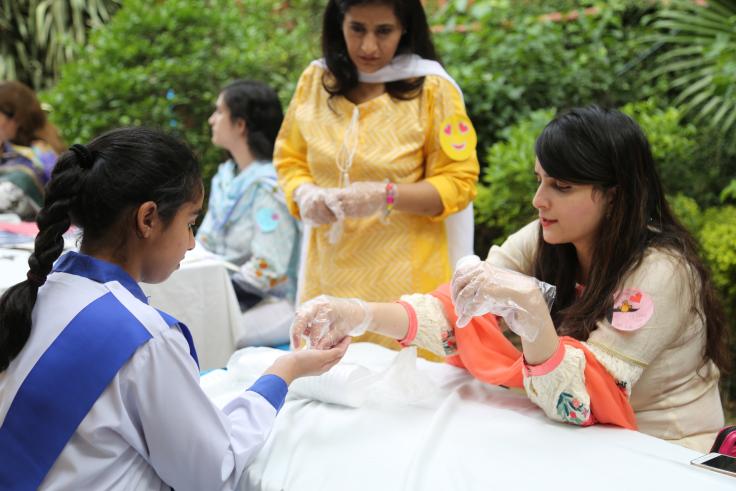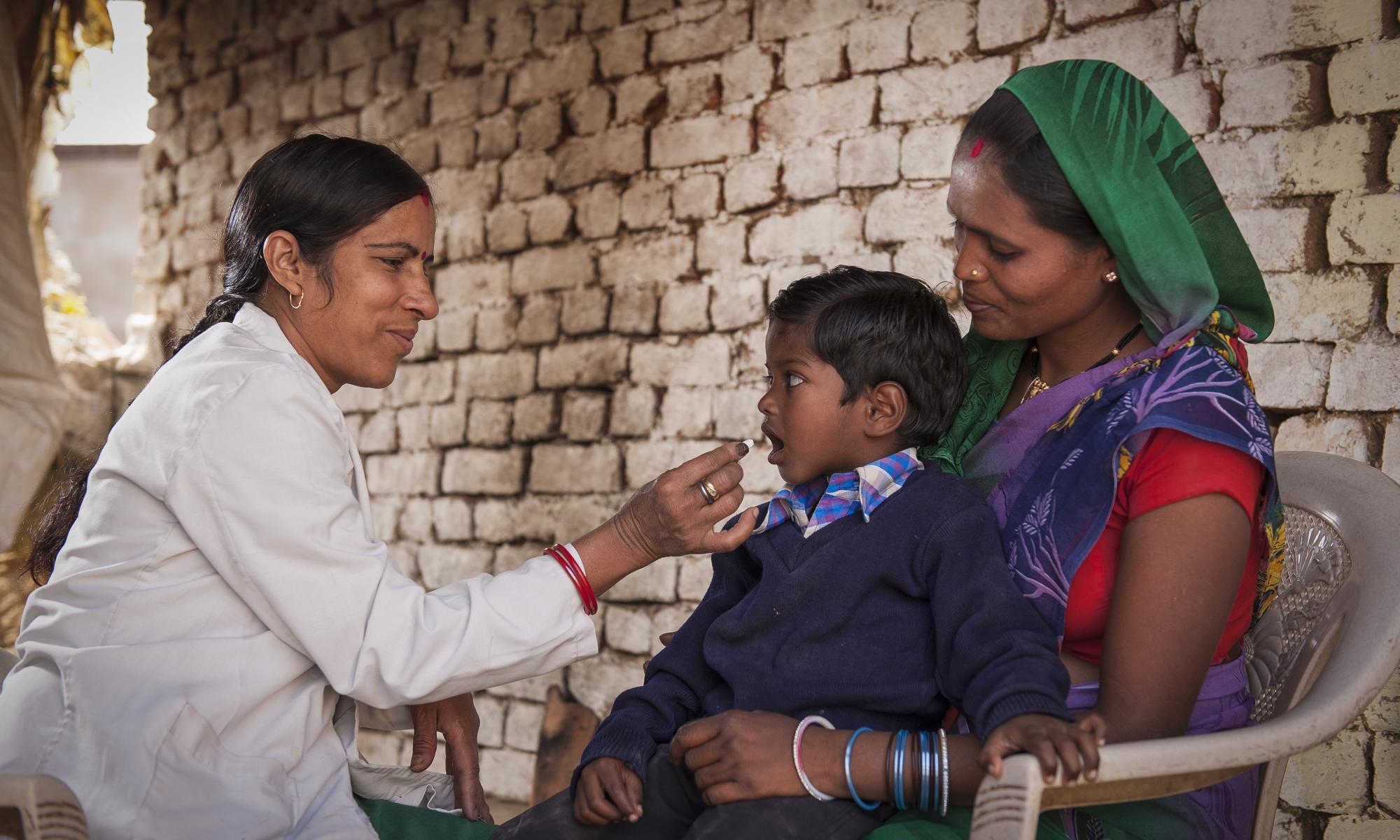
Providing regular deworming pills for children helps them stay in school, learn more, and earn more as adults.

Deworming offers funders a big bang for their buck. At a cost of around US $0.50 per child per year, deworming tablets are inexpensive and help children do better inside and outside the classroom, with long-term impacts up to twenty years later.
School-based programs reach more children. Schools are a good venue to cost-effectively and conveniently deliver many different types of health programs to children, including deworming treatment. Policymakers should consider expanding deworming beyond health centers and homes to also include schools.
Where you treat matters. Deworming programs work well in places where severe worm infections are common, but do not improve school outcomes in places where intestinal worms are rare. Policymakers should make sure they are running deworming programs in the right places.
Nearly one out of every four people worldwide have intestinal worm infections, spread through contaminated water or dirt. When children get infected, it’s harder for them to absorb nutrients and fight off other diseases like malaria. They struggle to concentrate in class or miss school altogether. Since diagnosis is expensive and deworming pills are not harmful, the WHO recommends periodically giving deworming pills en masse in communities where lots of people are infected.
Giving deworming pills to all school children, in places where severe intestinal worm infections are common, helps them stay in school and have better long-term outcomes. In Kenya, for example, this lowered children’s chances of getting a serious worm infection and helped them avoid missing school.
Deworming helps keep the whole community safer. In Kenya, even children who did not get deworming pills were less likely to get infected because their treated peers were not transmitting worms to other people in the community.
Deworming has lasting impacts on people’s lives. A long-term follow-up showed that ten years later, people who received deworming pills performed better in school and earned more money. Twenty years later, they were spending more and still earning more. This was especially true for men, likely because women faced other barriers to economic opportunities. Younger siblings saw gains, too; a decade later, kids who were infants when their older siblings received deworming pills had better memory, vocabulary, and reasoning skills, equivalent to an extra half a year of school.

"Intestinal worms are pervasive in the developing world and can have devastating effects…. Research shows deworming to be extremely cost-effective: you get a lot of bang for your buck."
Cost and design considerations
Deworming pills are one of the most cost-effective ways to increase school attendance. Deworming tablets cost only a few cents for governments or nonprofits to purchase, but can be highly effective. Each child who benefited from deworming tablets attended almost 6 additional weeks of school. Given the low cost of deworming, this means every US$100 spent on school-based deworming resulted in a whopping 11.9 years more schooling across all of these students.
In communities with many severe worm infections, policymakers should consider not only short-term health impacts but also long-term educational and economic gains. In Kenya, mass school-based deworming generated benefits to society, like higher earnings later in life, that were larger than the cost of the program.
Targeting deworming to places where worm infections are very common and more severe is important to see educational gains. While studies in China and Sri Lanka showed that infections declined, deworming did not impact school performance, as fewer children had worms and/or their infections were milder.
Schools are a good venue to cost-effectively and conveniently give kids deworming treatment. Schools aren’t just places for learning—they’re also hotspots for infection. Preventing kids from spreading intestinal worms is a smart way to lower overall infection rates. As seen in Kenya, giving some school kids deworming pills also benefits their peers by stopping sick kids from contaminating the surrounding soil and water. Delivering a health program at school is also smart logistics: health workers can reach hundreds at once rather than tracking kids down one by one, and parents can avoid the hassle and costs of bringing their children to a clinic.
Deworming pills are one of the most cost-effective ways to increase school attendance.
Implementing partners
Implementers bring deep local knowledge, technical expertise, and a commitment to evaluation and learning as they bring these programs to life. Non-governmental organizations that, to the best of our knowledge, integrate these lessons into their programming include the following (listed in alphabetical order); this list is not exhaustive.
- Deworm the World, Evidence Action
- Sightsavers
- Unlimit Health
- The END Fund

For example, since 2014, Deworm the World has worked closely with governments in India, Pakistan, Nigeria, Kenya, and Malawi to implement high-quality and cost-effective mass deworming programs that are resulting in dramatic reductions in worm prevalence. In 2024 alone, they supported over 198 million treatments across these countries.
The role of foreign assistance and philanthropy
Long-term evaluations can yield surprising results that can change decisions about where to invest—yet long-term studies can be expensive. Private philanthropy and government research funding enabled studies that revealed the value of deworming impacts beyond health, including on school attendance and long-term outcomes. These additional benefits are important considerations for cost-effectiveness, helping better inform governments who are deciding where to invest scarce resources—and crowding in more philanthropic funding.
Organizations like the World Bank, the Partnership for Child Development, Givewell, the US National Institutes of Health, the US National Science Foundation, and the Berkeley Population Center supported the initial and long-term follow-up studies in Kenya. Organizations like Children’s Investment Fund Foundation, Givewell, and the World Health Organization played essential roles in supporting the scale-up of deworming programs, bolstered by its cost-effectiveness in improving both health and education outcomes.
Discover more from J-PAL
Balwadi Deworming in India
Discover more from other sources
Video: Deworm the World Initiative
Evidence Action
Deworm the World
Evidence Action
Photos:
(1) A health worker gives a child deworming medicine in India. Credit: © Evidence Action
(2) Students getting deworming treatment at Kadika Primary School in Western Kenya in June 2023. Credit: © Evidence Action
(3) Credit: A student receiving deworming medicine in Pakistan. © Evidence Action



